 |
| View of the Porites compressa on Monday morning. Photo - M. Heckman |
Trying to recreate nature in an aquarium is always a tough thing to do. We strive to keep a relatively harmonious mix of creatures in our touch/observation table. But with raw seawater coming in and clumps of new sponge continuously being added for the tiger cowries to eat, it is inevitable that some less desirable characters will appear.
Such was the case again recently - we have been having an infestation, which seems to happen to us at least once a year. When I leave on Friday for the weekend, I always check the tank and typically the corals look good. But about once or twice a year when I come in Monday morning, pieces of the finger coral (Porites compressa) have gone from healthy to compromised. They have big white blanched areas down near their base.
 |
| Phystilla sea slug, C. Pittman photo |
The culprit is easy to guess, the white sickly looking area is living tissue devoured by the coral eating sea slug Phestilla lugubris. This is an animal feared by those that try and raise Porites (finger and lobe) corals in captivity. Outbreaks can be devastating if not checked. A quick examination of any coral in question typically reveals a large (well fed) specimen of Phestilla settled between two of the coral's branches.
 |
| Note sea slug at top, areas that the sea slug has eaten and the various egg masses that it has laid - all in one weekend. |
 |
| Closer view - M. Heckman Photo |
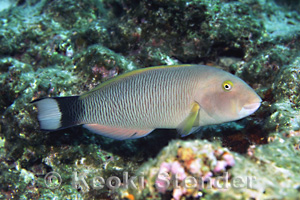 |
| Old woman wrasse |
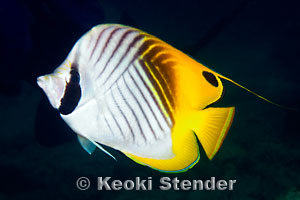 |
| Threadfin butterflyfish |
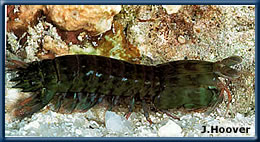 |
| Gonodactylaceus mantis shrimp from Introduced Marine Species of Hawaii |
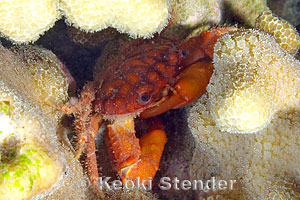 |
| Areolated xanthid crab |
These are very interesting animals. They are one of the few sea slugs that scientist have figured out their entire life history - think egg to adult in less than 40 days, adults live only a few months, laying thousands of egg a day, then die a couple of weeks later. Contrast this to an adult sea cucumber that might live decades. Some invertebrates move slow and live slow, some move slow and live fast. Phestilla may take down 10 square inches of coral a day, lay thousands of eggs and pass away, leaving their progeny to continue on.
Crawl slow, eat large, live fast.
For some great sites on these animals (and some of my references for this article), see:
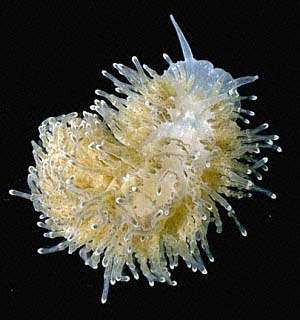 |
| Bill Rudman photo |
 |
| Pauline Fiene photo |
 |
| Dana Riddle Photo |
A recent article (this month) in Advanced Aquarist by Dana Riddle on coral eating sea slugs. Broad coverage, information for those who keep corals in captivity and the most up to date information. See: //www.advancedaquarist.com/2012/6/inverts
Other references
Control of populations of the coral-feeding nudibranch Phestilla sibogae by fish and crustacean predators. D.J. Gochfeld and G.S. Aeby. MARINE BIOLOGY, Vol. 130, Number 1 (1997)


That's pretty amazing !!! If you just look at the combined mass of the eggs vs the size of the Phestilla, you can think of this predator as a coral "lawn mower" that spits out piles of eggs the other end.
ReplyDelete